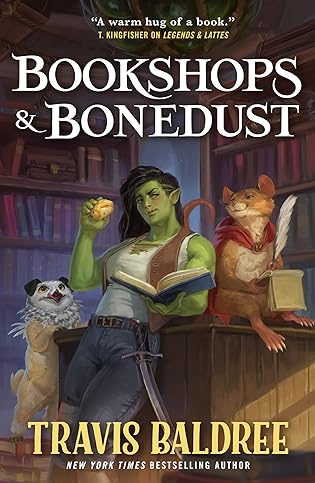 Bookshops & Bonedust (Legends & Lattes, #0) by Travis Baldree
Bookshops & Bonedust (Legends & Lattes, #0) by Travis Baldree Format: eARC
Source: supplied by publisher via NetGalley
Formats available: paperback, ebook, audiobook
Genres: cozy fantasy, fantasy
Series: Legends & Lattes #0
Pages: 352
Published by Tor Books on November 7, 2023
Purchasing Info: Author's Website, Publisher's Website, Amazon, Barnes & Noble, Kobo, Bookshop.org, Better World Books
Goodreads
When an injury throws a young, battle-hungry orc off her chosen path, she may find that what we need isn't always what we seek.
In Bookshops & Bonedust, a prequel to Legends & Lattes, New York Times bestselling author Travis Baldree takes us on a journey of high fantasy, first loves, and second-hand books.
Viv's career with the notorious mercenary company Rackam's Ravens isn't going as planned.
Wounded during the hunt for a powerful necromancer, she's packed off against her will to recuperate in the sleepy beach town of Murk—so far from the action that she worries she'll never be able to return to it.
What's a thwarted soldier of fortune to do?
Spending her hours at a beleaguered bookshop in the company of its foul-mouthed proprietor is the last thing Viv would have predicted, but it may be both exactly what she needs and the seed of changes she couldn't possibly imagine.
Still, adventure isn't all that far away. A suspicious traveler in gray, a gnome with a chip on her shoulder, a summer fling, and an improbable number of skeletons prove Murk to be more eventful than Viv could have ever expected.
My Review:
Legends & Lattes was all about Viv fulfilling a dream that she’s had for a very long time, to retire from the mercenary life and open a coffee shop, a place where she can hang up her sword (literally) and dispense peace and life-giving liquid in equal measure – instead of dealing death to people who generally deserved it.
The story in Bookshops & Bonedust is the story of way back when Viv was considerably younger and a whole lot dumber (as we often are) and first caught the inkling of that dream. Not in bustling Thune but in tiny, tacky, tawdry Murk, a seaside town that has certainly seen better days.
But it’s the most convenient place for Rackham’s Raiders, the mercenary company that young Viv is signed up with, to deposit her after she gets herself ahead of her team in a fight and gets skewered in the leg for her trouble. Or her hubris. Or just her belief that as a young orc in her first big skirmish she’s both immortal and indestructible.
Of course she’s neither, and has the bleeding holes in her leg to prove it. So she’ll be rusticating and recovering in Murk while Rackham’s Raiders are off to bring down Varine the Necromancer and her horde of skeletal warriors.
Viv is scared that Rackham won’t come back for her. She’s worried she won’t heal properly. But more than anything else, she’s frightened half to death that she’ll go out of her mind with boredom while she’s stuck, literally on her ass, in Murk.
Which is what leads her, albeit very indirectly and with a whole lot of excruciating steps, to Maylee’s bakery and Fern’s bookshop. The bakery because damn it smells good and the dwarf baker looks every bit as yummy as her freshly baked wares. The bookshop because there’s nothing to while away a whole lot of quiet time quite like a good book. Or a whole series of them.
And that bookshop, Thistleburr Booksellers, looks like it has lots and bunches of books, all sort of moldering away in a place that reeks of mold and moist and uncleaned rug and unwashed gryphlet. It smells ‘yellow’ to Viv, and any pet owner knows EXACTLY what that means.
But that doesn’t stop Viv from stepping in to while away a few minutes as she certainly has plenty to spare. The bookshop owner, desperate for both companionship and custom, induces Viv to take a book that she is certain will suck the orc right into its pages for a few hours.
And she’s right – of course she’s right – and it’s the beginning of the kind of friendship that will save them both, the store, and eventually and surprisingly the entire town of Murk.
Because Rackham’s Raiders are chasing that necromancer. A necromancer who is already on her deadly and deathly way to Murk – where Viv and Fern are waiting to beat her. Not with swords – but with just the type of cleverness that eventually will make Viv and her coffee shop such a success in Thune.
All it will take is a bit of ingenuity and a whole lot of help from Viv’s newly found friends.
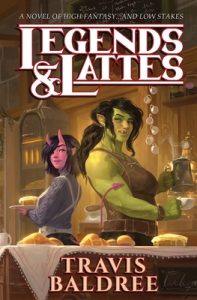 Escape Rating A+: Anyone who sunk straight into the cozy fantasy vibe of Legends & Lattes is going to sink into Bookshops & Bonedust and not emerge for much of anything until they fall out the other side with a huge smile, a taste for Maylee’s lassy (molasses) buns and a hankering for more stories just like this one – especially for more set in this marvelous world.
Escape Rating A+: Anyone who sunk straight into the cozy fantasy vibe of Legends & Lattes is going to sink into Bookshops & Bonedust and not emerge for much of anything until they fall out the other side with a huge smile, a taste for Maylee’s lassy (molasses) buns and a hankering for more stories just like this one – especially for more set in this marvelous world.
What makes this world, and this cozy fantasy style, just so much of a comfort read is that, although bad things do happen to good people, that is most emphatically NOT what the story is about. It’s not about big wars and bigger politics and gigantic battles between good and evil resulting in stupendously high butcher’s bills.
Not that there isn’t danger, and not that there isn’t a confrontation. Because there is most certainly both along with plenty of tension, both dramatic and romantic, to push the whole thing along.
But the way that things get solved and resolved is through less bloodthirsty means – and just as occurred in Legends & Lattes, quite often problems, from small to world-shattering, get solved with a whole lot of ingenuity and more than a bit of help from the friends – and even the frenemies – that Viv has made along the way.
So it’s all cozy in the best way, where the reader slips under a warm blanket of story and gets told a marvelous tale that displays more of the best in people than it does the worst.
Even better, Bookshops & Bonedust, while it has all the charm of Legends & Lattes, is a prequel and not a sequel. Meaning that if you somehow missed the sensation that is Legends & Lattes, you can start here. The story, after all, does start here. If this is where you start, you’ll be thrilled and charmed and ready to start Legends the minute you finish.
But if you started with Legends, reading Bookshops & Bonedust will almost certainly inspire you to pick up Legends again the moment you finish, so you can discover how all the little clues about Viv’s later adventures fit into her first one. I know it certainly inspired me! Which is a good thing because, both fortunately and unfortunately at the same time, the author has three more cozy fantasies lined up, but the first won’t be published until 2025. Plenty of time to reread – or maybe listen this time around – to both Legends and Bookshops (and maybe my other cozy favorite, Can’t Spell Treason without Tea) before my next visit with Viv!

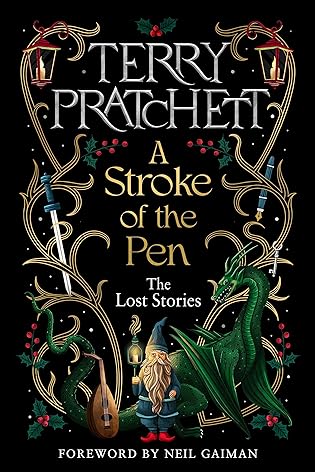 A Stroke of the Pen: The Lost Stories by
A Stroke of the Pen: The Lost Stories by 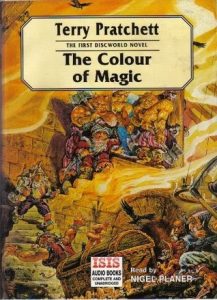 Two of those available titles were
Two of those available titles were  Shadow Speaker (The Desert Magician's Duology, #1) by
Shadow Speaker (The Desert Magician's Duology, #1) by 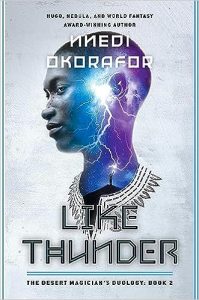 Which means that while the narrator, Délé Ogundiran, does an excellent job of standing in as Ejii’s voice, that may not be true for the second book in the duology, which will be Dikéogu’s story. Hopefully by the point in Dikéogu’s life when that story takes place, his voice will have dropped.
Which means that while the narrator, Délé Ogundiran, does an excellent job of standing in as Ejii’s voice, that may not be true for the second book in the duology, which will be Dikéogu’s story. Hopefully by the point in Dikéogu’s life when that story takes place, his voice will have dropped.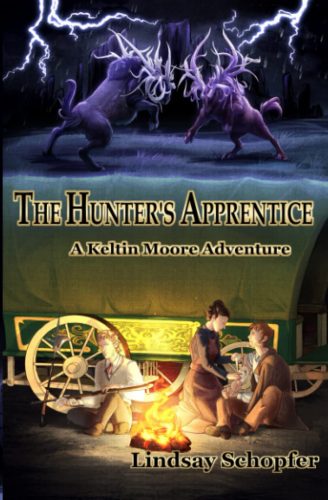 The Hunter's Apprentice: A Keltin Moore Adventure (The Adventures of Keltin Moore #4) by
The Hunter's Apprentice: A Keltin Moore Adventure (The Adventures of Keltin Moore #4) by 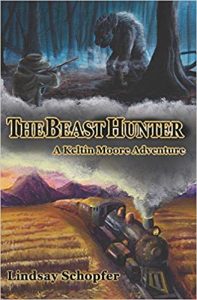 Keltin Moore’s fourth adventure represents a turning point for the famous Beast Hunter AND his family of choice in this fantasy-tinged, steampunk-powered series. When his story began in
Keltin Moore’s fourth adventure represents a turning point for the famous Beast Hunter AND his family of choice in this fantasy-tinged, steampunk-powered series. When his story began in 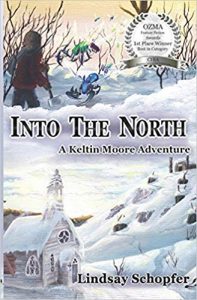 Escape Rating A: I read the second book in this series,
Escape Rating A: I read the second book in this series, 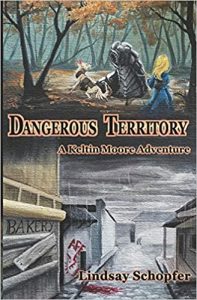 It’s an outsider’s inside view and the reader learns as much as Keltin does.
It’s an outsider’s inside view and the reader learns as much as Keltin does. Into the Riverlands (The Singing Hills Cycle, #3) by
Into the Riverlands (The Singing Hills Cycle, #3) by 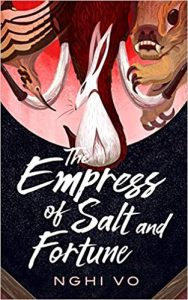 The entire
The entire 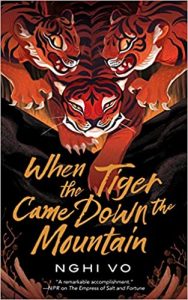 Escape Rating A+: At first, Into the Riverlands seems as if it’s a play on the Canterbury Tales, with Cleric Chih taking the place of Geoffrey Chaucer himself (who, come to think of it, by certain definitions was himself a ‘cleric’). Into the Riverlands is a journey, and every person in the party has at least one story to tell. It’s Chih’s duty to record those stories – not to become a part of one themselves.
Escape Rating A+: At first, Into the Riverlands seems as if it’s a play on the Canterbury Tales, with Cleric Chih taking the place of Geoffrey Chaucer himself (who, come to think of it, by certain definitions was himself a ‘cleric’). Into the Riverlands is a journey, and every person in the party has at least one story to tell. It’s Chih’s duty to record those stories – not to become a part of one themselves.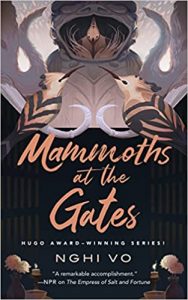 But, as I said in last week’s review of
But, as I said in last week’s review of 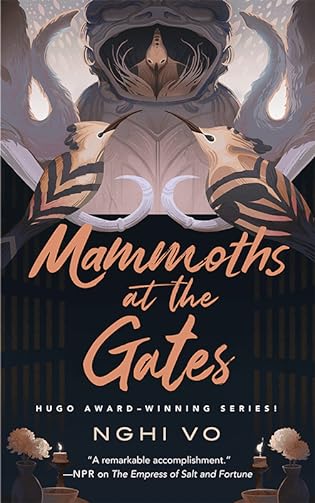 Mammoths at the Gates (The Singing Hills Cycle, #4) by
Mammoths at the Gates (The Singing Hills Cycle, #4) by  It’s also a heartbreakingly beautiful tale of a truth that sets no one free, and a love that both transcends and transforms death.
It’s also a heartbreakingly beautiful tale of a truth that sets no one free, and a love that both transcends and transforms death.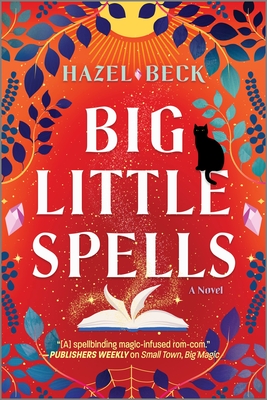 Big Little Spells (Witchlore, #2) by
Big Little Spells (Witchlore, #2) by 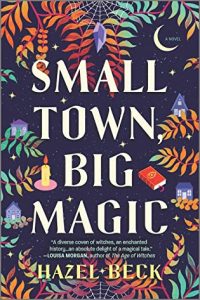 Escape Rating B+: In that opening bit of petty bullshit, I began wondering if the reason that nasty showed up in the river was either because Joywood summoned it themselves – or if they were just so corrupt that like called to like. I’m still debating that particular question – but hunting for the answer certainly kept me turning pages.
Escape Rating B+: In that opening bit of petty bullshit, I began wondering if the reason that nasty showed up in the river was either because Joywood summoned it themselves – or if they were just so corrupt that like called to like. I’m still debating that particular question – but hunting for the answer certainly kept me turning pages.
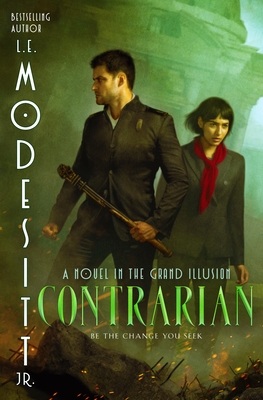 Contrarian (The Grand Illusion #3) by
Contrarian (The Grand Illusion #3) by 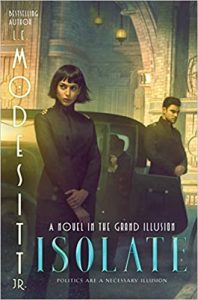 The first book in this series,
The first book in this series, 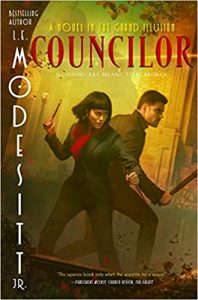 Escape Rating A+: This series is my catnip. I could read about Steffan’s work day, his colleagues, his attempts to maneuver around a great many of them, and the crises in his country that he tries to prevent, pretty much all day long.
Escape Rating A+: This series is my catnip. I could read about Steffan’s work day, his colleagues, his attempts to maneuver around a great many of them, and the crises in his country that he tries to prevent, pretty much all day long. 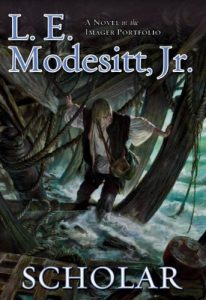 The progress of the series so far reminds me a lot of the author’s
The progress of the series so far reminds me a lot of the author’s 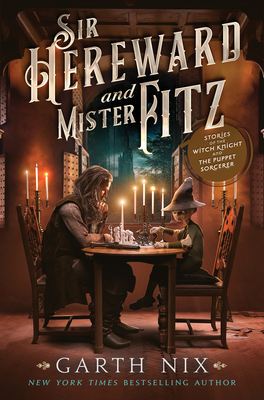 Sir Hereward and Mister Fitz: Stories of the Witch Knight and the Puppet Sorcerer by
Sir Hereward and Mister Fitz: Stories of the Witch Knight and the Puppet Sorcerer by 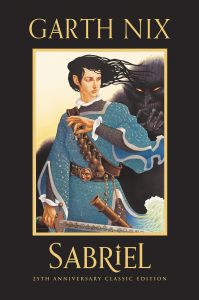 Escape Rating B+: I’ve always meant to read the author’s
Escape Rating B+: I’ve always meant to read the author’s 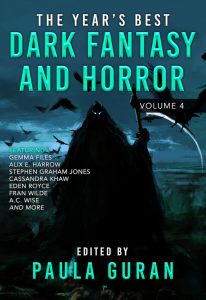 Two final notes about Sir Hereward and Mister Fitz. There’s a story in the forthcoming collection
Two final notes about Sir Hereward and Mister Fitz. There’s a story in the forthcoming collection 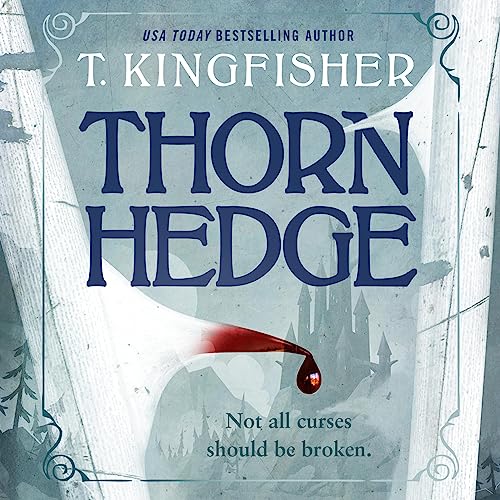 Thornhedge by
Thornhedge by 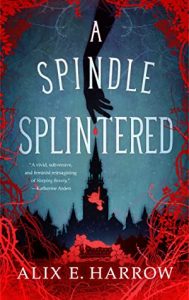 Escape Rating A: Thornhedge is a fractured fairy tale. In fact, Thornhedge and
Escape Rating A: Thornhedge is a fractured fairy tale. In fact, Thornhedge and 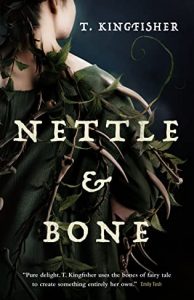 Or in my case, reread.
Or in my case, reread.